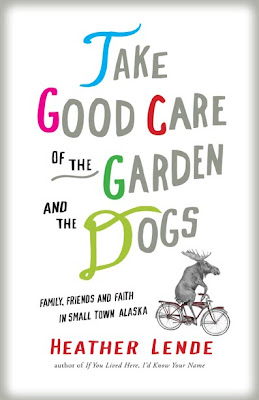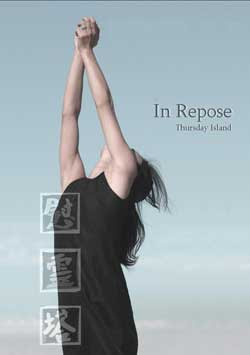A well written obituary can be a wonderful way to memorialize a person. Whether we knew the deceased or not, it can be a moving affirmation of life as well, reminding us of what is important and precious. Often the best subjects for this kind of obituary are not the rich or famous, but the seemingly ordinary people just like us. Through a thoughtful and caring look at their lives we can appreciate better, the unique beauty of those all around us.

Heather Lende
This is the kind of obituary Heather Lende writes; sharing the life stories of departed friends and neighbors in small-town Haines, Alaska. Ms. Lende writes obituaries for The Chilkat Valley News , a column for the Alaska Dispatch, and is the Author of 'If You Lived Here, I'd Know Your Name: News From Small-Town Alaska', and 'Take Good Care of the Garden and the Dogs: Family, Friends and faith in Small-town Alaska' To contact Heather or read her new blog, "The News From Small-Town Alaska," visit www.heatherlende.com.
She has graciously allowed me to share with you a recent article published in the Alaska Dispatch, "Walking with the Departed". In addition to being a very nice memorial to those she mentions, this article reminds us that we maintain a relationship with our loved ones even after they die. Though our conversations become more one-sided, it is still important for us to share our highs and lows with them, to carry on with the gifts they gave us, and to keep them alive in our memories and stories. Enjoy...
The other day I went snowshoeing with three dead people. I do it more often than you'd think. It is one of the most common side effects of writing obituaries on a deadline (no pun intended) and racing off for the fresh outdoors while there is still daylight. It is almost impossible to leave the spirits of people you have known well (or wished you had) buried under a pile of notes on a messy desk while you tromp up a snowy trail all by yourself.
And often, while you have the recently dead for spiritual company, the longer, and sometimes dearer, dead come along too. But this day there was already a crowd, so I left my mother and a good friend home for another day.
I don't mean to say that I see ghosts. I only think about them, and sometimes tell them things, which I hope they can hear, and ask them for guidance, which I hope I can hear.
(This is where my husband will look over his glasses and say, "Maybe we should take a winter vacation after all." Maybe I am getting a little wiggy from all the snow and darkness.)
In December a friend of mine wanted to meet with a clairvoyant from Florida who was visiting town, and asked me to go with her. She wanted to know how her late husband was doing. The clairvoyant said he was very happy, and that most people in what she called "the spirit world" are. (Or is it were?) She said that when you hear yourself saying something that a long-gone spouse, friend, or parent would say, that it actually is them speaking through you. She said the spirits of the dead are close, but most of us can't see them because we don't pay attention.
Do I believe it? I'd like to, wouldn't you? The clairvoyant would probably say that my doubt is why I've never seen my dead partners.
But they do snowshoe with me. That much I'm sure of.
I had just written three obituaries for the Chilkat Valley News. The first was for my neighbor, a sweet and capable man. He was a mechanic, pilot, fisherman, and tenor in the church choir. Tom Jackson was 86 when he died sort of suddenly -- he had been well at Christmastime, but there was some cancer and surgery in Seattle, and his lungs were worn out. The same weeks that I waited for a granddaughter to come into this world, his grandchildren (and the rest of the family, 15 relatives singing and praying at his deathbed) watched Tom leaving it. Tom's oldest friend Bob said -- with the kind of understatement men not used to being tender use -- "He had a most effective smile. When Tom smiled you knew he really meant it."
I wrote the second obituary for a feisty Italian-American from New York City whom I never met, but whose daughter is a local contemporary of mine. Gloria Morey arrived in Haines on a November day in 1952 and it was not love at first sight. Her daughter said that if there had been any way to get back to New York that day, Gloria would have turned right around. Instead, she married a transplanted Iowa farmer and together they ran the Bamboo Room restaurant for about 25 years. One friend said Gloria and her husband were all "sugar and spice" -- and Gloria was the spice. Another friend said she was a smart bridge player who rattled her opponents with her speed. When Gloria was on the city council, one old neighbor said, "She kept things riled up pretty good." I wished she hadn't headed for Florida the minute she retired nearly 35 years ago.
The third obituary was for a woman I'm sure I would have remembered if we had met, but she moved to Oregon shortly after I arrived. Suzi Butz's daughter told me over the phone from their home in Grants Pass, that Suzi loved to babysit her grandchildren, and that she was a "Bible-thumping holy roller" of the best sort. A friend in Haines said it was not uncommon to see Suzi praying for residents in the grocery store. I also learned that she was a large, exceptionally strong woman, thanks to the steroid treatments she had received for childhood polio. A former neighbor said Suzi was so muscular that "you couldn't dent her," and that she had to careful around water because "she'd sink like a stone." She was also a good cook and helped deliver many babies, including three of my friend Patty's five daughters. Patty said Suzi introduced her to two of her now-favorite things: "moose stew and Jafra cosmetics."
Like I said, it is impossible to leave the good company I keep when I'm finished writing obituaries. As we walked up the hill to Lily Lake in twilight with snow gently falling, Tom smiled, Gloria said I should crush, not chop, the garlic in my marinara sauce, and Suzi prayed for me. When I closed my eyes I could almost see them, almost.

Ms. Lende's new book is due out in May





















